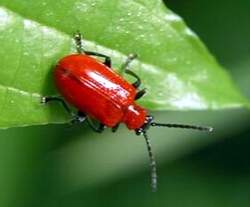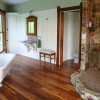My favorite old house finish is made from the scraped bits of bug secretions. And when first harvested, the finish is a tempting amalgam of scraped bark, bug appendages, and sticky-lac resin. The female lac bug is the one responsible for this resin and she lives in the trees of India and Thailand. When cooked down, the bark bit and bug piecesare left behind and you end up with a sheet of shellac flakes that can be mixed on site with denatured alcohol to create the liquid finish. No other finish imparts the warmth of shellac or the resonance of historical context it provides.
It was the predominant finish from the 1800s through the 1960s and is very watery, but has a reddish-orange glow that is incredibly inviting and homey. We use it on everything from antique heart of pine six panel doors to stair newels, spindles, handrails, windows and trim casings. I’ve also used it on coffered ceilings, kitchen cabinets, and furniture. Wonderfully forgiving, shellac doesn’t scratch easily and can be easily touched up with another coat of shellac (unlike with polyurethane) as the denatured alcohol in the new coat bonds to the existing coat for a seamless touch up. It’s also non-yellowing, super quick drying, has excellent hardness, can be sanded, and can be easily removed with more denatured alcohol.
Shellac is a green product with low toxicity and is a perfect finish for coming into contact with children’s toys and food.
With the advent of polyurethane, it seems like shellac was a finish left behind. But if you have an old house that you’re refinishing, shellac is a must-have finish. I avoid it in wet places like bathrooms and around sinks though, as water leaves waxy white marks on the finish.
Some wacky shellac facts:
- It takes about 100,000 lac bugs to make 500 g of shellac flakes
- Shellac is edible and used as a pill glazing and a coating on Skittles. It is not vegan though, as it contains crushed bug bodies.
- According to some sacred Hindu texts, an entire palace was once built from shellac.
- Shellac can be considered a natural form of plastic.
- Until the advent of vinyl, grammophone records were pressed from shellac compounds.
- Used to stiffen felt used to make hats.




